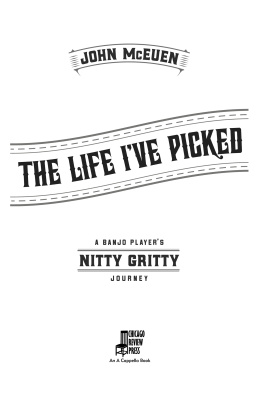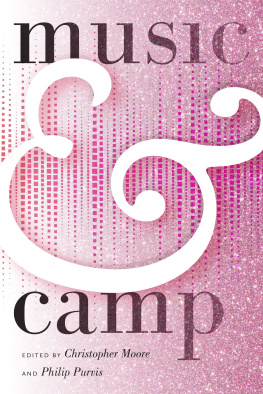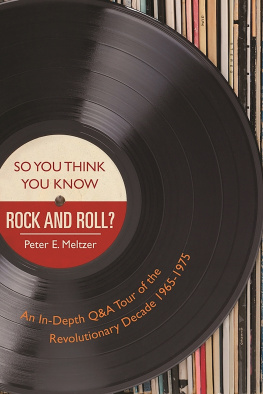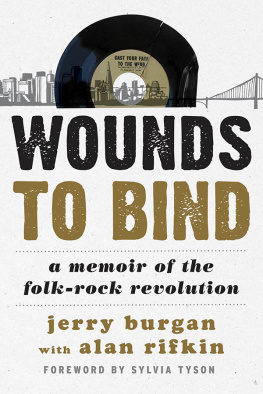


Thank you for downloading this Simon & Schuster eBook.
Join our mailing list and get updates on new releases, deals, bonus content and other great books from Simon & Schuster. CLICK HERE TO SIGN UP or visit us online to sign up at
eBookNews.SimonandSchuster.com

Contents
For Mary and Carlos
Truth is simple, but seldom ever seen
Let nothing come between simple man, simple dream.
John David Souther, Simple Man, Simple Dream
Amo, lloro, canto, sueo. (I love, I cry, I sing, I dream.)
Rafael Bolvar Coronado and Pedro Elas Gutirrez, Alma Llanera

Gilbert Ronstadt.
Smiling at our big tomcat in the dress my mother made for my first day of school.
Tucson
JULY 1946
O N HER WAY TO the hospital the day I was born, my mother wanted to stop and eat a hamburger. She was hungry, and maybe wanted to fortify herself against the brutally hard work of pushing out a baby, a task that lay immediately and ominously before her. It was raining hard, and the streets were badly flooded. My father, a prudent man, wanted to be sure I was born in the hospital and not in his car. He loved my mother tenderly and was unlikely to deny her anything within reason, but he denied her this, and so I was delivered safely from the watery world of her interior to the watery exterior world of the Arizona desert in a cloudburst.
In the desert, rain is always a cause for jubilation. July and August brought the ferocious seasonal rainstorms on which all life, including mine, depended.
I was brought home to a house my parents had built of adobe on the last ten acres of my grandfather Fred Ronstadts cattle ranch. He had sold it off in parcels during the dunning years of the Depression and relied on the thriving hardware business he had built in downtown Tucson at the end of the nineteenth century to supply a living for my grandmother and their four sons. It bore his name proudly as the F. Ronstadt Hardware Company and took up nearly a city block. I remember it as a wonderful place of heavily timbered floors and the pervasive smell of diesel oil. Inside it were tractors, bulldozers, pumps, windmills, bins of nails, camping supplies, high quality tools, and housewares.
My grandfather, having been born in Sonora, Mexico, did business with all the Mexican ranchers who were within a three or four days drive by car, a journey often made by my father. In those days, the border was a friendly place, and easy to cross. We knew many of the families in the north of Mexico, and we attended one anothers balls, picnics, weddings, and baptisms. My parents often drove us across the border into Nogales, which had wonderful stores where we would shop. After that, they would take us to the cool, plush recesses of the Cavern Caf, and we would be served a delicious turtle soup.
I deeply miss those times when the border was a permeable line and the two cultures mixed in a natural and agreeable fashion. Lately, the border seems more like the Berlin Wall, and functions mainly to separate families and interfere with wildlife migration.
My father, in addition to working in the hardware store and going to the University of Arizona in Tucson, helped my grandfather on the ranches he owned.
My mother, who was called Ruth Mary, told us that the first time she saw my father, he was riding his horse up the stairs of her sorority house. He was pursuing someone who was not my mother, but his eye was soon drawn to her.
In 1934 shed made the three-day journey by train from her home state of Michigan to the University of Arizona, where she was enrolled to study math and physics. She was passionate about math. When she was worried or couldnt sleep, we would find her at three oclock in the morning, sitting at the dining room table, working a problem in calculus.
Her father was Lloyd G. Copeman, a well-known inventor, with the electric toaster, electric stove, rubber ice cube tray, and pneumatic grease gun to his credit. He also operated an experimental dairy farm in the Michigan countryside and, early in the twentieth century, invented a milking machine. He used to demonstrate one of his inventions, a 1918 version of the microwave oven that he called cold heat, by frying an egg through a newspaper. Thinking that the oven was too expensive to manufacture, he never patented it. He worked closely with Charles Stewart Mott, then chairman of the board of General Motors, and developed a great deal of what was then state-of-the-art equipment in the Buick factory in Flint, Michigan.
Old Mr. Mott was fond of my mother and came many times to visit us in the wilds of Tucson. In the fifties, he was caricatured with his enormously bushy white eyebrows as General Bullmoose in Lil Abner , a long-running comic strip drawn by Al Capp. We read it regularly in the Tucson Daily Citizen .
Coming from such a background, my mother must have found my father, and the Arizona desert that had shaped him, to be richly exotic.
My father, known as Gilbert, was handsome and somewhat shy. He rarely spoke unless he had something worthy to say. When he did speak, his words carried a quiet authority. He had a beautiful baritone singing voice that sounded like a cross between Pedro Infante, the famous Mexican matinee idol and singer, and Frank Sinatra. He often sang at local venues like the Fox Tucson Theatre, where he was billed as Gil Ronstadt and his Star-Spangled Megaphone. He serenaded my mother under her window with pretty Mexican songs such as La Barca de Oro and Quireme Mucho. Added to this was the fact that when my mother was introduced to my grandfather, an autodidact, he dazzled her with his knowledge of geometry and calculus. My mother surely thought she was marrying into a gene pool that would produce mathematicians, but my grandfather was also a musician, so musicians were what she got.
In the late nineteenth century, my grandfather was the conductor of a brass band called the Club Filarmnico Tucsonense. He taught people how to play their instruments, conducted the band, composed and arranged, and played the flute. I have the cornet part written in his own hand from an instrumental arrangement he wrote for The Pirates of Penzance in 1896.
He was a widower when he married my grandmother. A daughter from his first marriage, Luisa Espinel, was a singer, dancer, and music scholar who collected and performed traditional songs and dances from northern Mexico and many regions in Spain. She can be seen in a brief comedic appearance as a Spanish dancer in The Devil Is a Woman , a 1935 film that starred Marlene Dietrich.
In the twenties, she wrote a letter home to my grandfather from Spain, where she had been performing. In it she reported that she was hugely excited about a guitarist she had hired to be her accompanist. She said he was such a brilliant player that he could hold the audience when she left the stage to change costumes. She wanted to bring him to the United States because she was sure he would make a huge hit with American audiences and eventually establish his own career. His name was Andrs Segovia.
Next page














